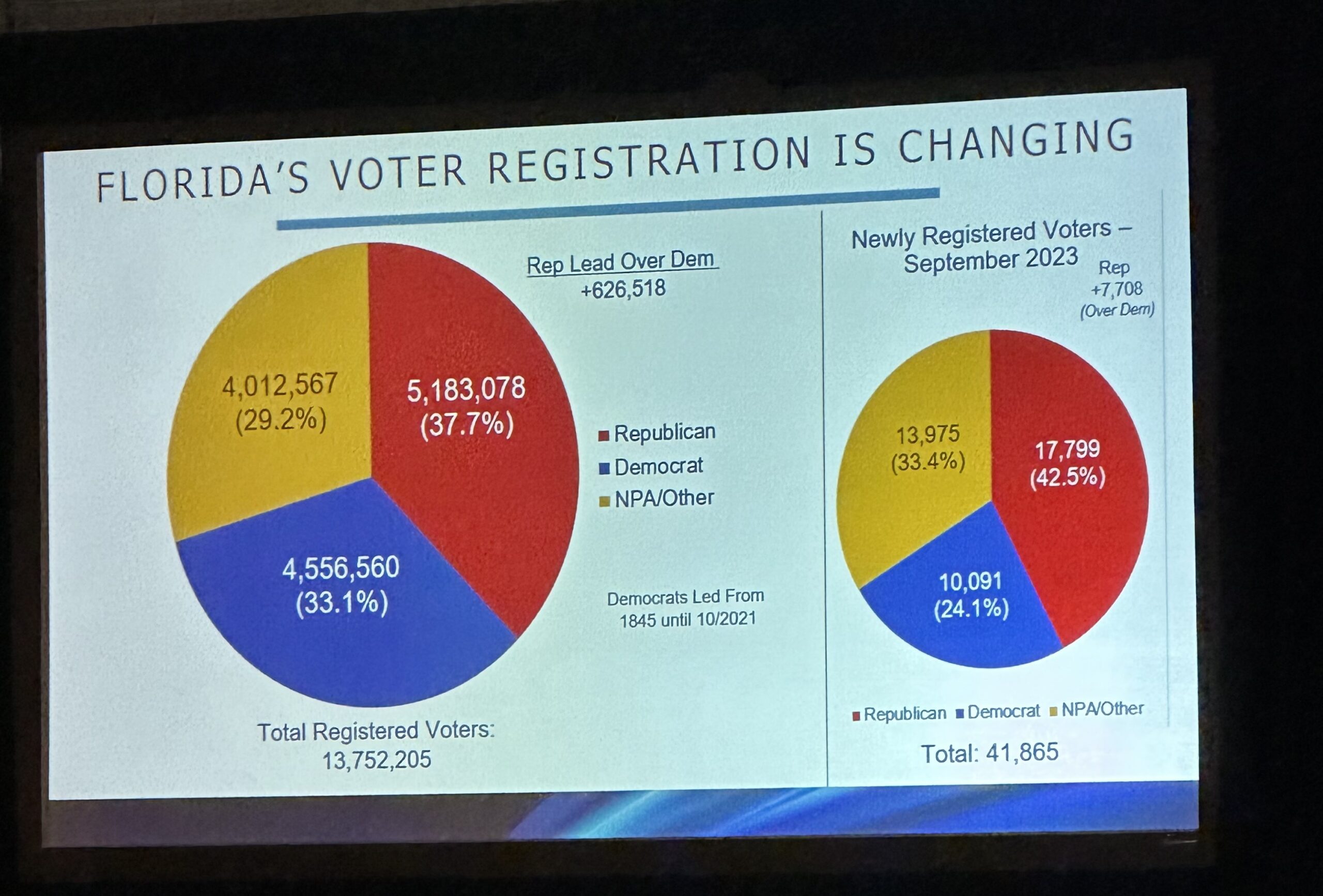Florida Chamber President and CEO Mark Wilson opened the 2023 Future of Florida Forum with an update on the state of Florida business and a look toward the future.
If measured as a country, Florida would be the No. 16 largest economy in the world, about on par with Saudi Arabia, and the Chamber's long-held goal is for the Sunshine State to crack the Top 10. Florida's GDP currently sits at $1.03 trillion; No. 10 South Korea had a $1.63 trillion economy in 2022.
Growing the state economy that much over the next seven years is a tall order, but the Florida Chamber Foundation research team has copious data on how much the state is expected to grow, where it currently stands, and what the business community needs to do to meet the challenge.
Two of the key figures: Florida is expected to add 2.8 million new residents by the start of the next decade, and the business community will need to create another 1.23 million jobs to accommodate the growing population.
Notably, Chamber researchers forecast more than half of new residents will settle in just five counties: Miami Dade, Orange, Hillsborough, Broward and Palm Beach.
Much of the ground Wilson covered is familiar to those who've followed the progress reports since the Chamber released its Florida 2030 research project five years ago.
While the pandemic was a gut punch to many parts of the state economy, it has rebounded better than expected, particularly in new jobs in Florida — at the 2019 Future of Florida Forum, Chamber researchers said the state was 1.6 million jobs off from the 2030 goal.
Another positive trend, outlined a few months ago in the Chamber's 2023 Florida Business & Economic Mid-Year Report, is income flow. New arrivals are bringing a lot of cash with them — Florida is the No. 1 state in the country for income migration, with $39.2 billion in wealth flowing into the state over the past year — the equivalent to $4.48 million per hour. Texas is a distant No. 2 at $10.9 billion.
Those residents are also registering to vote, which has led to a seismic shift in the state's political landscape.
When the Florida 2030 Blueprint was first released, Democrats outnumbered Republicans in the state by more than 250,000; the Chamber on Monday shared data showing the GOP held a 625,000-voter advantage as of the beginning of October.

Last month alone, 18,000 Republicans were added to the voter rolls, compared to 10,000 Democrats. Part of the growing gap is the precipitous jump in no-party voter registrations. Still, Florida Politics' own review of post-pandemic voter registrations, based on L2 data, shows new state residents are playing an outsize role in the GOP shift.
Wilson noted several stat improvements in other areas tracked as part of the Chamber's "Six Pillars" framework: the percentage of Florida children living in poverty is currently 18.2%, a 0.5-point decrease year-over-year, and the state is currently the No. 20 state in well-being and rising. Crime rates are also on the downswing, while per capita incomes are on the rise — the current figure is $63,597.
However, state stats are moving in the other direction. Housing costs continue to rise, with the number of "housing burdened" residents — defined as spending more than 30% of their income on housing — has grown 4.2 percentage points year-over-year to 56.8%. An estimated 28.8% of residents spend at least half of their income on housing.
Early education metrics show nearly half of incoming kindergartners aren't ready for school and 50% of third graders aren't reading at grade level. Math scores are improving, however, and educational attainment is as well — two-fifths of Floridians have at least an associates degree and nearly a third have a bachelor's degree or higher.
Stats aside, Wilson said the path forward remains the same: "Florida is still at a crossroads. There's a lot of countries that want to be better than Florida. A lot of other states," Wilson said. "If we unify the business community for good, good things happen."

No comments:
Post a Comment